Go hog wild with pig drawings.
Learn how to draw realistic pigs and cartoon piglets in this easy step-by-step tutorial.
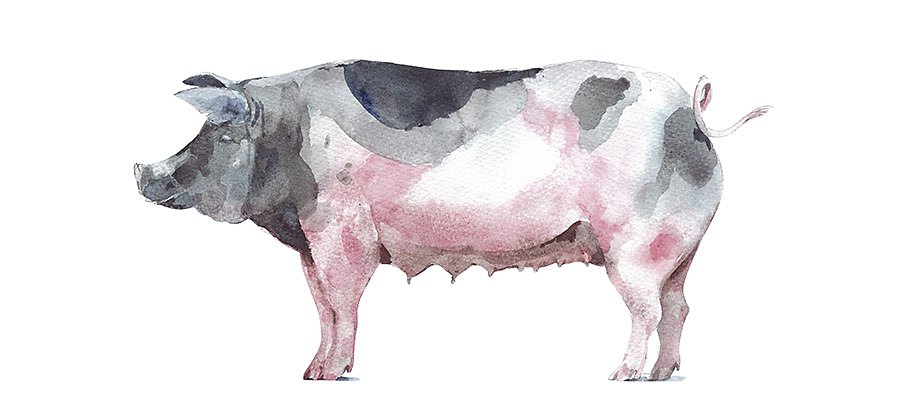
Explore porcine particulars.
Pigs hold a special place in the human imagination, showing up in our fairy tales, nursery rhymes, and allegorical novels. To capture the personalities of these intelligent, social creatures, start by looking at reference photos. Note how domestic pigs and piglets look different from wild boars and warthogs. Notice the variations in body and head shape, body coloring, and hair length. Once you’ve got a couple of photos to guide you, you’re ready to begin.
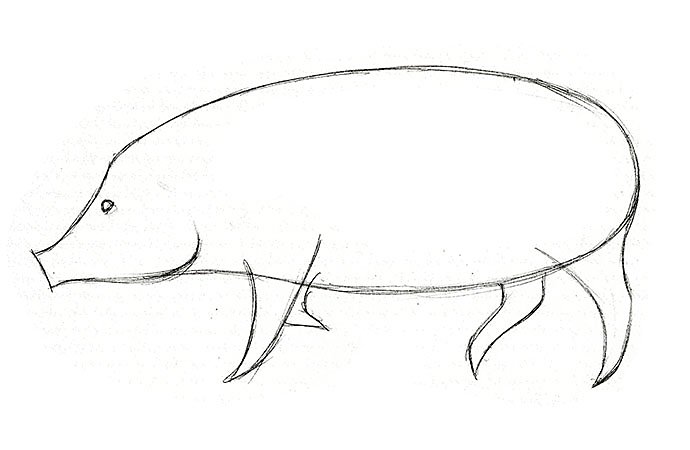
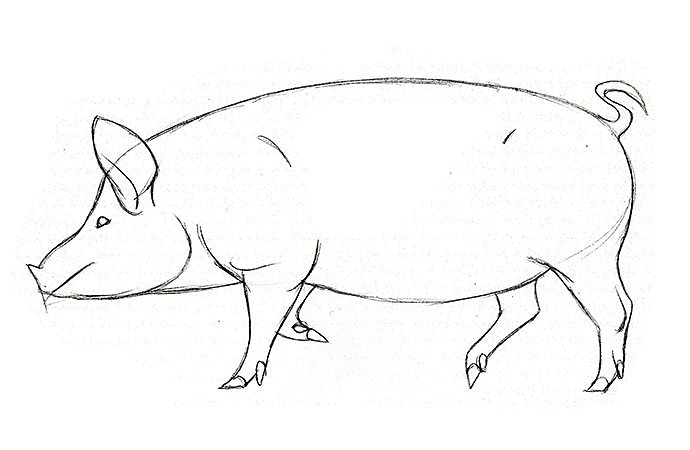
Image by Terry Whitlatch
Start with shapes.
To capture a pig in profile, whether you want yours to be a realistic one or a cartoon like Peppa Pig, begin with basic shapes. “Pigs are fairly simple because they’ve got such a round body,” says artist Terryl Whitlatch. “Just get that big jelly bean shape, and then for the head, think of drawing a jug on its side. The opening of the jug is the front of the snout.”
Illustrator Alex Braun begins with ovals. “I find those base shapes and from there I work in the secondary shapes. The body is just kind of this large rectangular oval itself, and it moves into this sort of oval triangle shape to the head,” Braun says.
For the legs, Whitlatch recommends starting with curved, tapering lines almost coming to a point. “Pigs have very small, very dainty feet,” she says.
Add details.
Once you’re happy with the basic shape of the pig’s body, add details like the ears, the feet, and the tail. To draw the ears, start by looking at your reference photos and noting how they’re shaped. A pig’s ears are most often shaped like diamonds or fans, and sit behind the eyes.
To draw the rest of the face, Braun draws a nearly vertical line for the nostril and a horizontal line for the mouth. By adding an oval for the eye, he gives his pig instant personality. The mouth on Whitlatch’s pig begins with a straight horizontal line, which she erases and redraws jaggedly to look more realistic. She also adds lines across the top of the snout, above and below the eyes, and she adds curves to represent the cheek and jawline.
Domestic pigs have curly tails, but boars’ tails tend to be straight. Warthogs’ tails are also straight, with tufts of hair at the end. For the curly-tailed pigs, Whitlatch draws an S shape while Braun makes a reversed C.
To refine the lines of the legs and hooves, look back at your reference photo. How much of the far legs can you see? Note that pigs are cloven-hoofed, like cows, sheep, and goats. Each foot has two main two hooves that the pig walks on and then two additional dewclaws on the sides. You can also take Braun’s approach and draw a cartoon pig without detailing the hooves.
For a more realistic pig, represent the musculature with lines inside the body. Whitlatch adds a curved line towards the shoulder area and another, smaller curved line above the hind leg to represent the tip of the pelvis. She refers to photos frequently to get all of the body contours just right and to add some hair to the ears and tail.
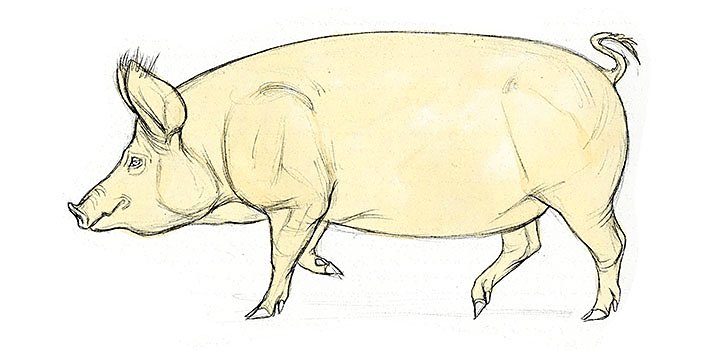
Image by Terry Whitlatch
Give your pig some color.
Domestic pigs come in a variety of colors, including solid pink, yellowish white, solid black, black and white, and pink with black spots. Wild pigs vary even more. For her domestic pig, Whitlatch starts with a yellowish beige. “From there I take a pinkish color and add a little bit of pink in the ear and snout area around the eye and shoulder. Those are areas where the blood is very close to the surface of the skin,” she says. If you look at your reference photos, you’ll notice these rosy hues are especially apparent on animals where there is little or no hair.
Painting digitally, Braun uses a pink salmon color for his pig. “I take a darker and more saturated pink color to give the ears a little gradient to show more blood flow there,” Braun says. He does the same with the snout and uses a soft brush to smooth the transitions.
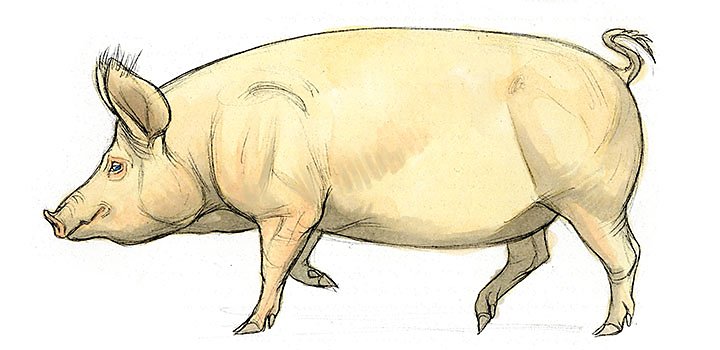
Image by Terry Whitlatch
Add highlights and shadows.
For her realistic pig, Whitlatch adds shadows with a warm gray color under the inside of the legs, underneath the chin and toward the interior of the ear. “If we imagine that the pig is walking around outside, and the sun is shining down on it, these are the areas where the light can’t reach,” she says. For her finishing touches, Whitlatch adds a little more pink to the nose area and a dark blue to the eye, since domestic pigs’ eyes are often blue.
To put the finishing touches on his cartoon pig, Braun adds shadow on the back legs by creating a new layer, setting the blending mode to Multiply, and shading the back legs, belly, and neck with a neutral pink. To enhance the appearance of three-dimensionality, he adds thinner shadow lines where the legs connect to the body. He also adds shadow for the tail and ears. “Pictures of pigs help you understand the depth and the form of the ears, so you can create this shadow shape underneath it,” Braun says.
Braun adds mud splatter to give his pig a little extra character. Drawing lines slightly outside the body shape, he gives the mud its own form so it’s sitting on top of the pig. Then he creates shadow lines for the mud to give it even more of its own form. The result is a happy, muddy little pig.
Paint a pig with Adobe Fresco.
With live brushes, you can do just about anything in Adobe Fresco that you can do with real paint, watercolors, or markers. Once you’ve got one pig, keep going. Try drawing other animals, like a bird or a horse. Or draw three little pigs and a wolf for a fairy tale illustration.
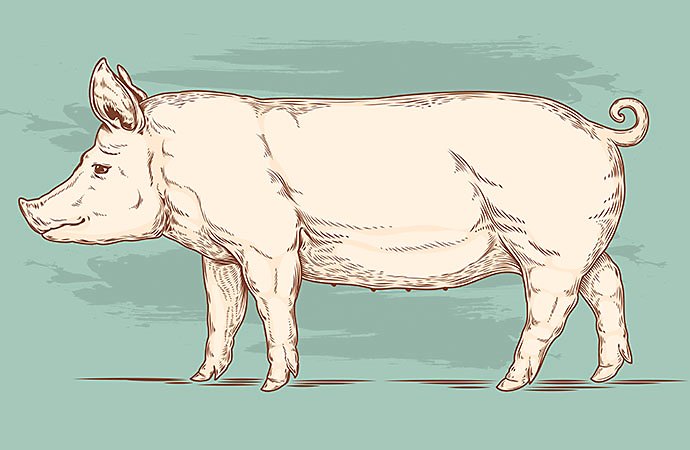
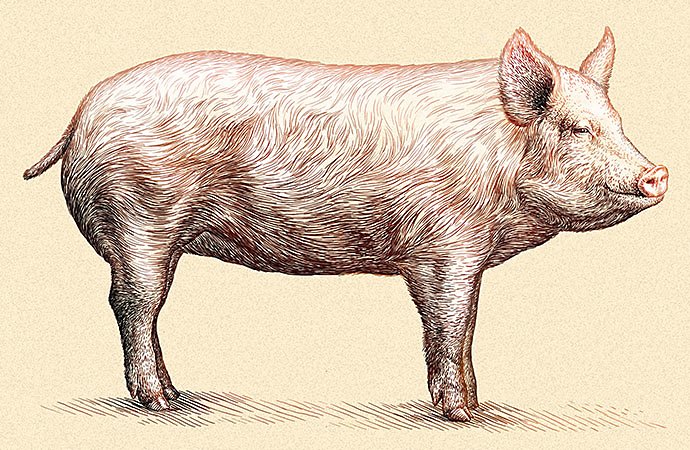
Whatever you try next, remember this last piece of advice from Whitlatch: “Just relax and take your time. Put some music on, and remember that erasers are your friends and that you don’t have to be perfect.”
Contributors
You might also be interested in…
สร้างลายเส้นแปลงที่ลื่นไหลและพื้นผิวที่มีเอกลักษณ์ของสีน้ำด้วยเคล็ดลับเหล่านี้
เริ่มต้นอาชีพวาดภาพประกอบหนังสือสำหรับเด็ก
รับข้อมูลเชิงลึกและคำแนะนำเกี่ยวกับโลกแห่งศิลปะสำหรับวรรณกรรมสำหรับเด็กที่เต็มไปด้วยการแข่งขัน
สำรวจศิลปะการเล่าเรื่องตามลำดับและเรียนรู้วิธีขัดเกลาทักษะของคุณเพื่อสร้างสรรค์สื่ออันน่าตื่นเต้นนี้
การใช้งานปากกาดิจิทัลและเครื่องมือวาดภาพดิจิทัลอื่นๆ
ดูว่าคุณจะนำอิสระและความสะดวกของเทคโนโลยีการวาดภาพดิจิทัลมาใช้ในกระบวนการทำงานของคุณได้อย่างไรบ้าง



